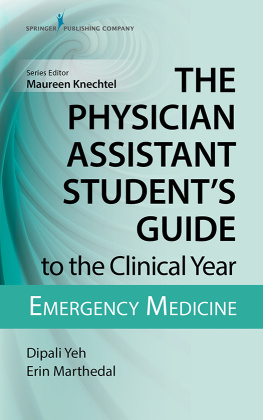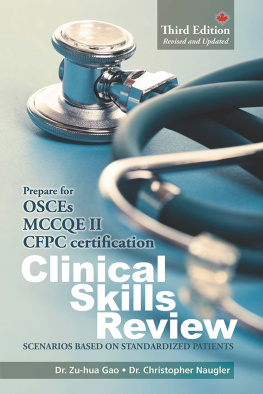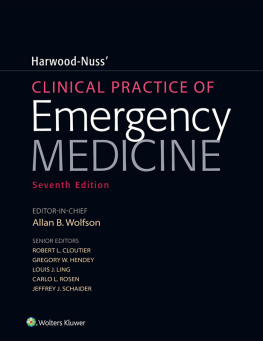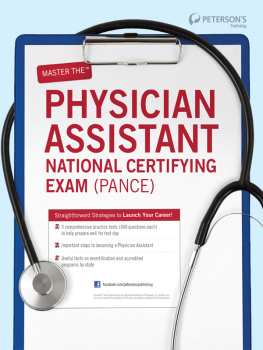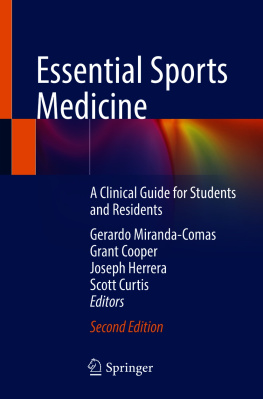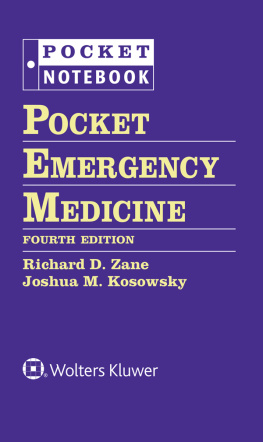1
Common Presentations in Emergency Medicine
Introduction
During your emergency medicine (EM) rotation, you will evaluate a variety of presentations and disease entities. Although not all inclusive, this chapter reviews some of the more commonly encountered chief complaints. These include
1. Abdominal pain
2. Altered mental status
3. Chest pain
4. Headache
5. Injury
6. Low-back pain
Abdominal Pain
Abdominal pain is a commonly encountered clinical problem, accounting for nearly 10% of all visits to the ED. The etiology of abdominal pain in the acute setting is a difficult one as benign conditions can present with instability and, conversely, patients with acute pathology can present in a benign format. As a result, the key to diagnosis is an algorithmic approach that requires a comprehensive yet concise history and appropriate physical exam skills. Because the physician assistant (PA) curriculum requires competency in these skills, you are already prepared for this rotation.
The key to being a good provider is differentiating whether the presentation is one that may lead to decompensation quickly, as in the case of a dissecting aortic aneurysm, or one that may be fairly benign such as dyspepsia. The utility of physical exam findings and other objective measures, such as vital signs, is also relevant in determining the approach to the diagnosis. These simple tools should allow the emergency medicine provider to have a streamlined approach and prevent the use of unnecessary imaging.
Clinical Pearl: Select populations with abdominal pain in whom to consider emergent processes include pediatric and geriatric patients, pregnant females, and postoperative patients.
Differential Diagnosis
The differential diagnosis of abdominal pain can be narrowed by the location of the pain, as seen in . Keep in mind that many processes can present in multiple locations, such as an ovarian cyst, torsion, ischemic bowel, and sickle cell crisis.
Table 1.1 Differential Diagnosis of Abdominal Pain by Location
| Right Upper Quadrant | Subxiphoid | Left Upper Quadrant |
|---|
Biliary colic (cholelithiasis)
Cholecystitis
Hepatitis
Ascending cholangitis
Choledocolithiasis
Pancreatitis
Pulmonary infarct
Sickle cell crisis
Fitz-HughCurtis syndrome | PUD
Dyspepsia
Gastritis
Acute MI
Pancreatitis
Aortic aneurysm | Gastritis
Esophagitis
DKA
Pulmonary infarct |
| Right Middle Quadrant | Periumbilical | Left Middle Quadrant |
|---|
Same as RUQ
Renal colic
Occult malignancy | Early appendicitis
Early gastroenteritis
Colitis
Early small bowel obstruction
Celiac sprue
Intestinal ischemia
Porphyria | Ileus
Intestinal obstruction
Occult malignancy |
| Right Lower Quadrant | Suprapubic/Hypogastric | Left Lower Quadrant |
|---|
Ovarian cyst
Adnexal torsion
Tubo-ovarian abscess
Testicular torsion
Diverticular disease
Hernia (inguinal/femoral)
Ectopic pregnancy
Renal colic | Cystitis
Pregnancy
Threatened abortion
Urethritis
Pelvic inflammatory disease
Bladder distention
Endometriosis | Diverticular disease
Colonic lesion
Enteritis
Colitis
Hernia (inguinal/femoral)
Crohns disease
Ectopic pregnancy
Testicular torsion
Renal colic |
DKA, diabetic ketoacidosis; MI, myocardial infarction; PUD, peptic ulcer disease; RUQ, right upper quadrant.
Source: Henderson M, Tierney LM, Smetana GW. The Patient History. 2nd ed. New York, NY: McGraw-Hill; 2012; Bickley LS. Bates Guide to Physical Examination and History Taking. 12th ed. Philadelphia, PA: Wolters Kluwer; 2017:449508.
You can also frame the differential diagnosis based on age:
Young female: Ectopic pregnancy, ruptured ectopic pregnancy, ovarian torsion
Older male: Abdominal aortic aneurysm (AAA), ruptured viscous
Alcohol use: Pancreatitis
Anticoagulant use: Lower gastrointestinal (GI) bleed
Young male: Testicular torsion
History
In determining the etiology of pain, recall human embryological development. Epigastric pain typically derives from the foregut structures, including the stomach, pancreas, and proximal duodenum. Any pain deriving from the periumbilical region can be attributed to the midgut structures, including appendix and small bowel. Suprapubic pain can develop from hindgut organs such as the genitourinary (GU) system, bladder, or terminal colon. Location of the pain can facilitate diagnosis due to the anatomical structures within the abdominal cavity.
In taking the history of present illness, use the OPQRST format to further narrow the differential diagnosis:
O: Onset: When was the onset of the pain? Was it sudden or more gradual?
P: Provocation/palliative components: Any provocating or palliating components? Postprandial? Previous history of similar pain?
Q: Quality: What is the quality of the pain? Is it sharp, dull, achy, burning?
R: Radiation: Does the pain have any radiation?
S: Severity: On a scale of 110, how severe is the abdominal pain?
T: Timing: How long does the pain last? Is it constant or does it wax and wane?
Determine the onset of pain and its quality. If the patient had acute onset, consider diagnoses related to acute visceral injury such as perforated ulcer, renal colic, or ruptured ovarian cyst. Pain with a more gradual onset presents with inflammatory etiologies, such as biliary colic, diverticulitis, and hepatitis.
Pain: Visceral fibers are attached to organs and do not localize pain very well. As a result, the pain is usually dull and secondary to other reasons such as ischemia or stretching. The somatic fibers innervate the peritoneum. When activated by inflammation or blood, the pain is more localized and patients complain of the pain being sharp. Asking about the quality of pain will facilitate your decision-making process.
Radiation: The concept of pain radiation is also key to determining the etiology of abdominal pain in the adult. Pain, such as biliary colic, may radiate to the right shoulder, to the midepigastrium or even to the right flank. Renal colic radiates to the flank of the ipsilateral side and patients may describe it as radiating to the scrotum for males and to the labia for females.
The pain from appendicitis is dynamic due to the evolving nature of the disease. The pain from appendicitis typically begins in the umbilicus and then radiates to the right lower quadrant.
Pain secondary to renal colic may start in the flank but may travel to a testicle for male patients. This is relevant because if the patient has a testicular torsion that is causing pain instead, it can be a missed diagnosis with heavy consequences such as lifetime infertility. Testicular torsion is an emergent condition requiring rapid diagnosis and intervention.
Timing: Timing will vary depending on the etiology of the patients pain. Visceral conditions, such as biliary colic, tend to progress over time. The same goes for diverticulitis, in which left lower quadrant (LLQ) pain is felt for several days.
When the pain started and the quality of the pain are relevant to diagnosis. Visceral pain tends to be more insidious. It also tends to present in a location other than where the actual disease process is.
Past Medical History Specific to Complaint
Past medical history contributing to a patients abdominal pain can be brief, but there are a few distinct questions that stand out when obtaining this information. The preceding description of the OPQRST format allows for the history of present illness. When following the standard format for outlining past medical history, the following additional considerations should be discussed:
Next page
